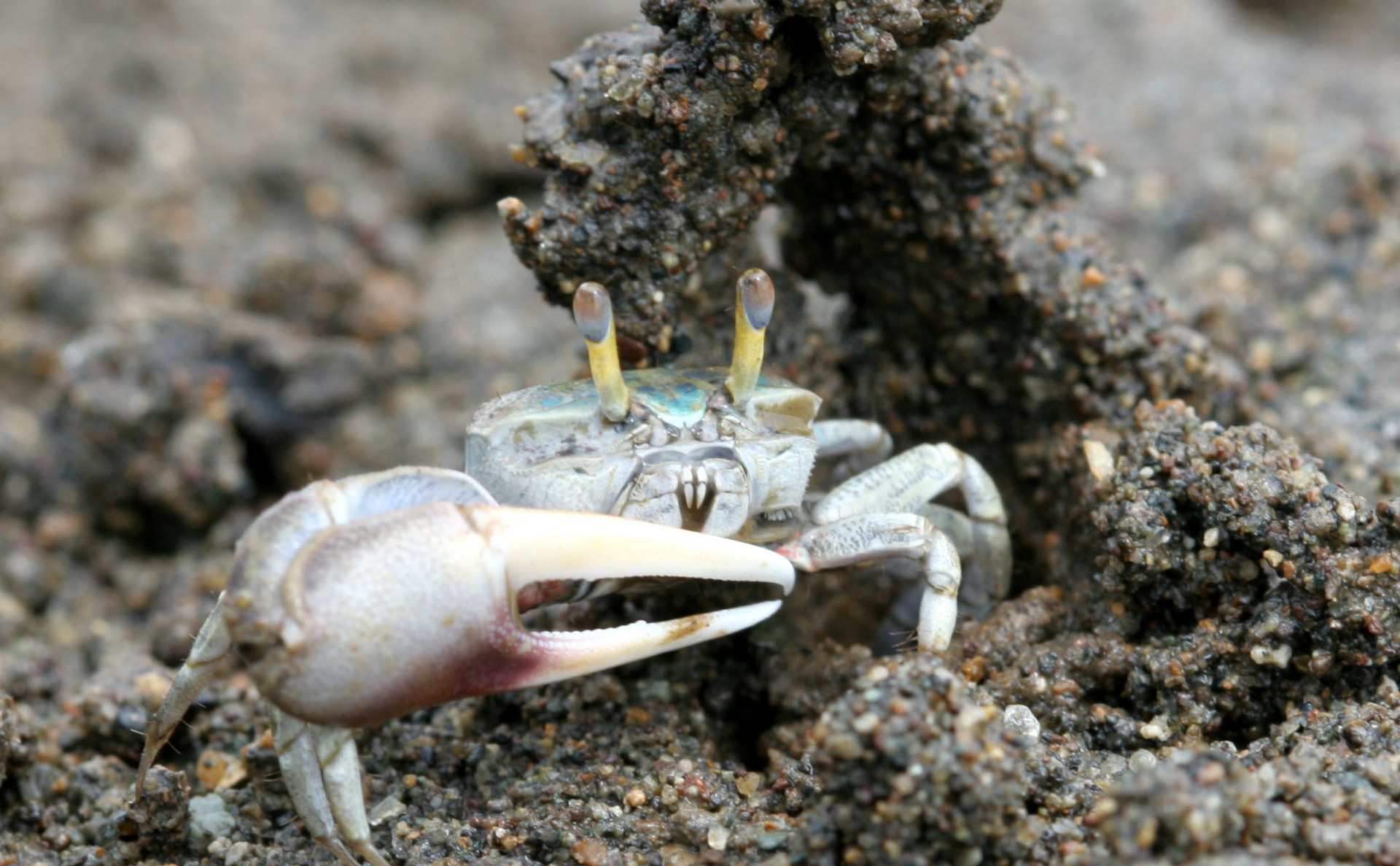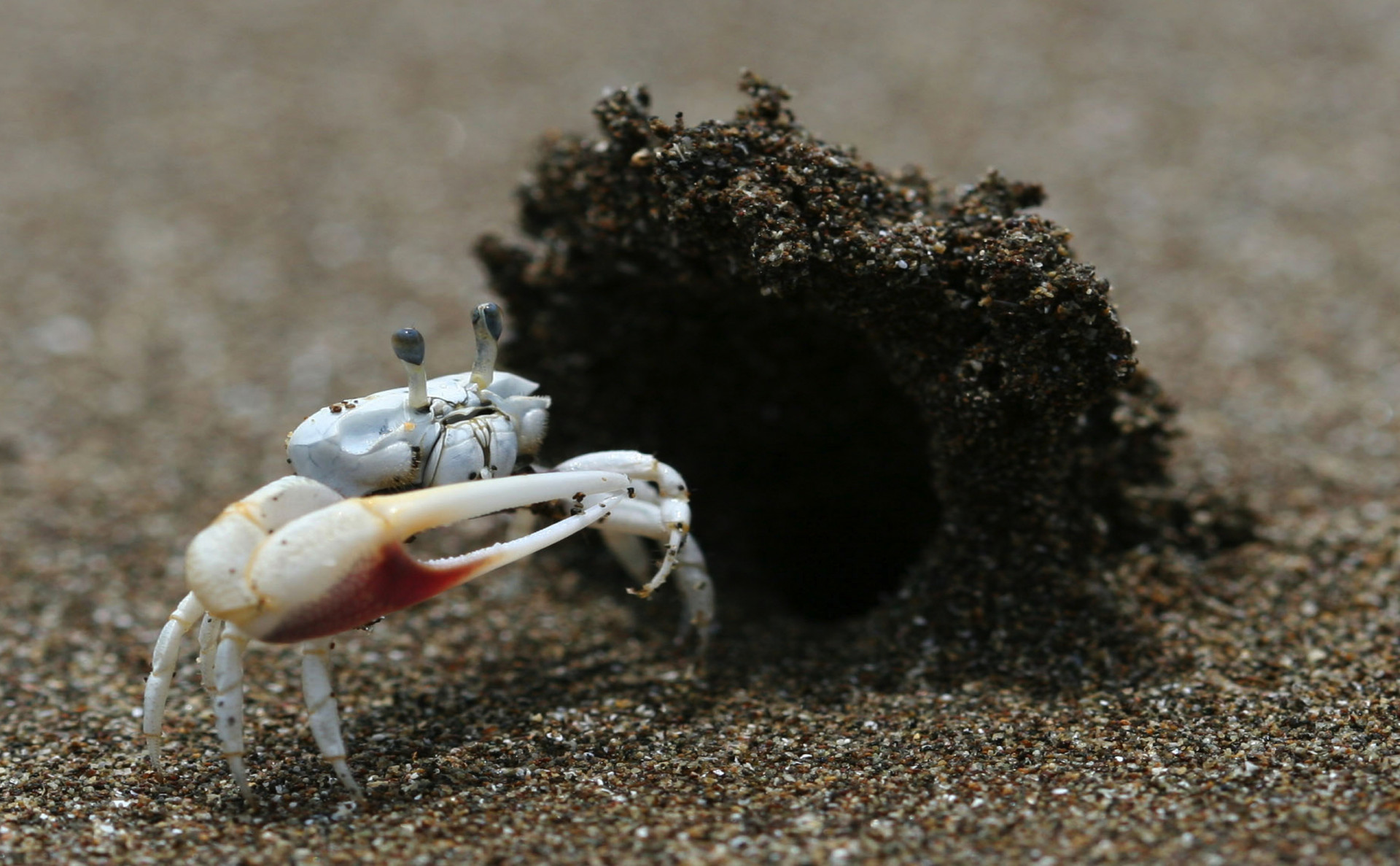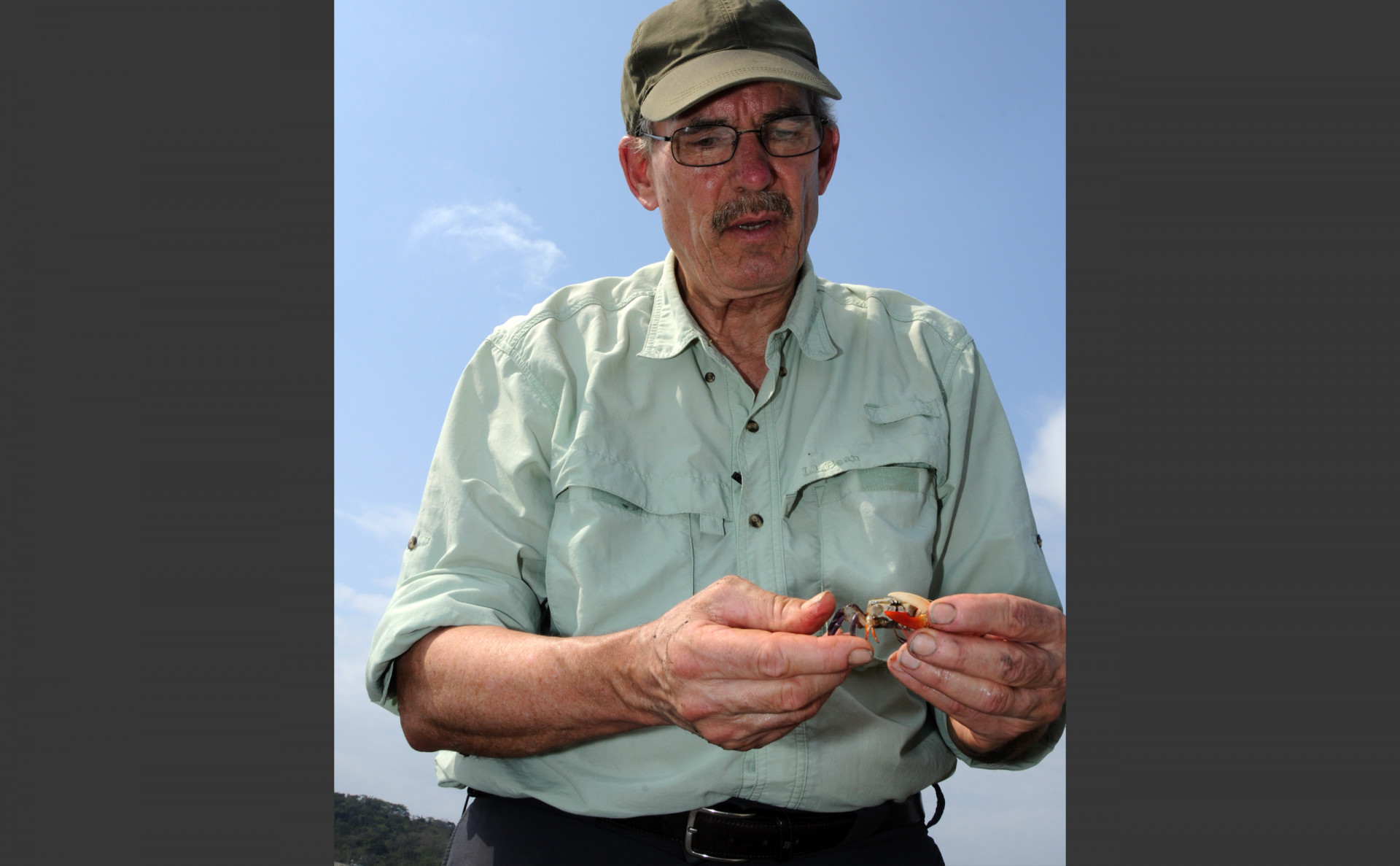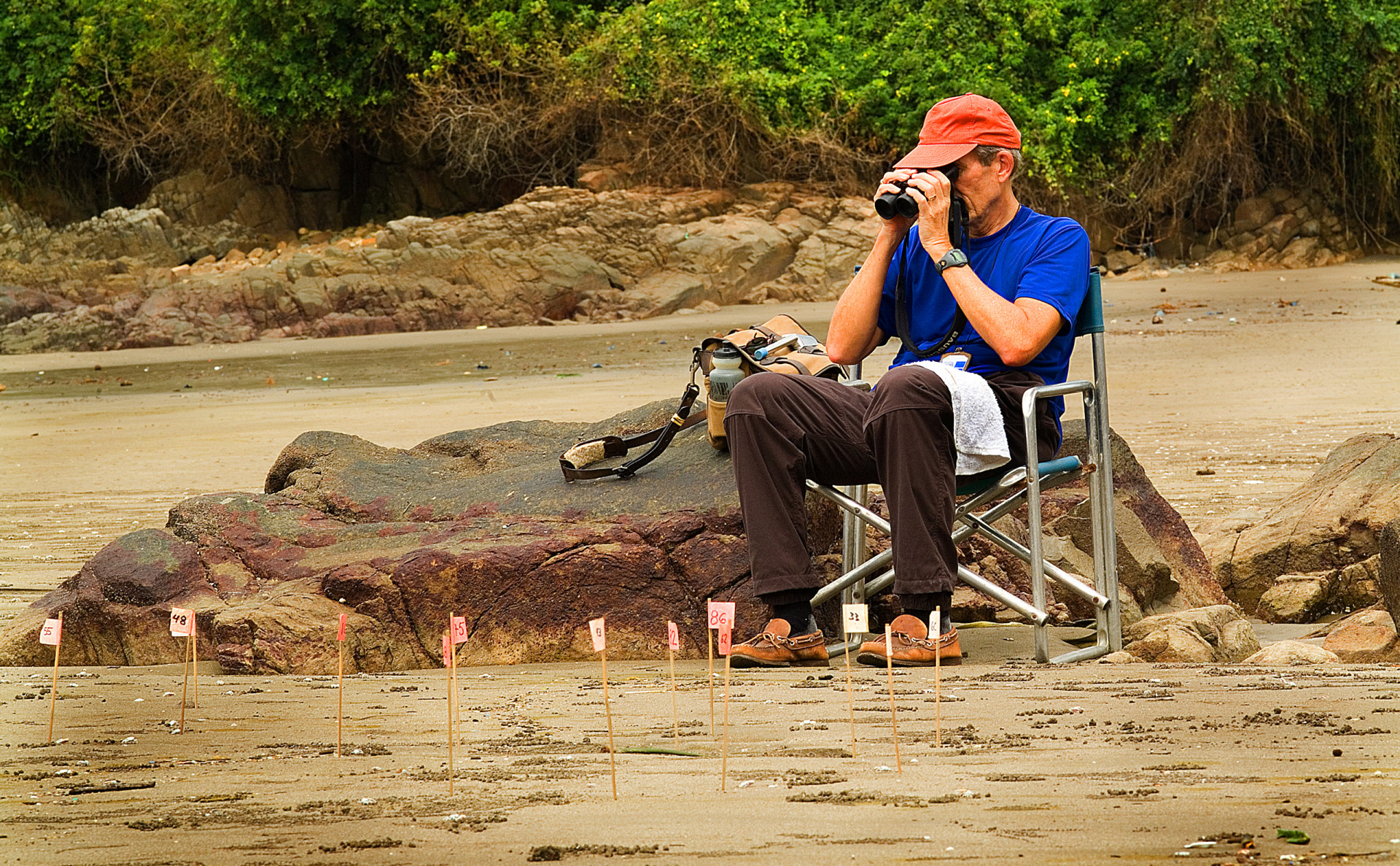A Weapon For All Reasons
Does beauty beget weakness?
Punta Culebra, Panama
Male fiddler crabs’ large claws may look unwieldly, but a new study demonstrates that these large weapons are not only for show.
The longer a male fiddler crab’s big claw the scarier he is to competitors and the more attractive to mates. But, like chop sticks, long claws cannot pinch hard at the tips and long clawed males may lose fights with males with shorter, more powerful claws.
This idea is known as the paradox of the weakening combatant: as a weapon increases in length, the combatant’s ability to deliver forces with it in a fight decreases. But do male fiddler crabs fight with the tips of their claws in chop-stick fight fashion?
STRI scientist John Christy and Stefan Dennenmoser, STRI intern now at the University of Calgary found that male fiddler crabs don't usually unleash a crustacean death grip with their claw tips. Instead, crabs grasp each other’s claw with the mid-section of their claws as they attempt to flip the competitor, or eject him from his burrow, thus winning tussles for a mate.
The scientists conducted their study around the Pacific gateway to the Panama Canal, including at STRI's Culebra Point. They observed crab fighting, collected them and measured the relative position of tubercles—bumps on the serrated inner claw where the crabs pinch in a fight.
As claws grow, the tubercles stay close to the inner part of the claw’s gripping surfaces, which may compensate for the disadvantage posed by a longer claw. So claws can be "both beautiful and powerful weapons," the researchers write in the journal Evolution.



